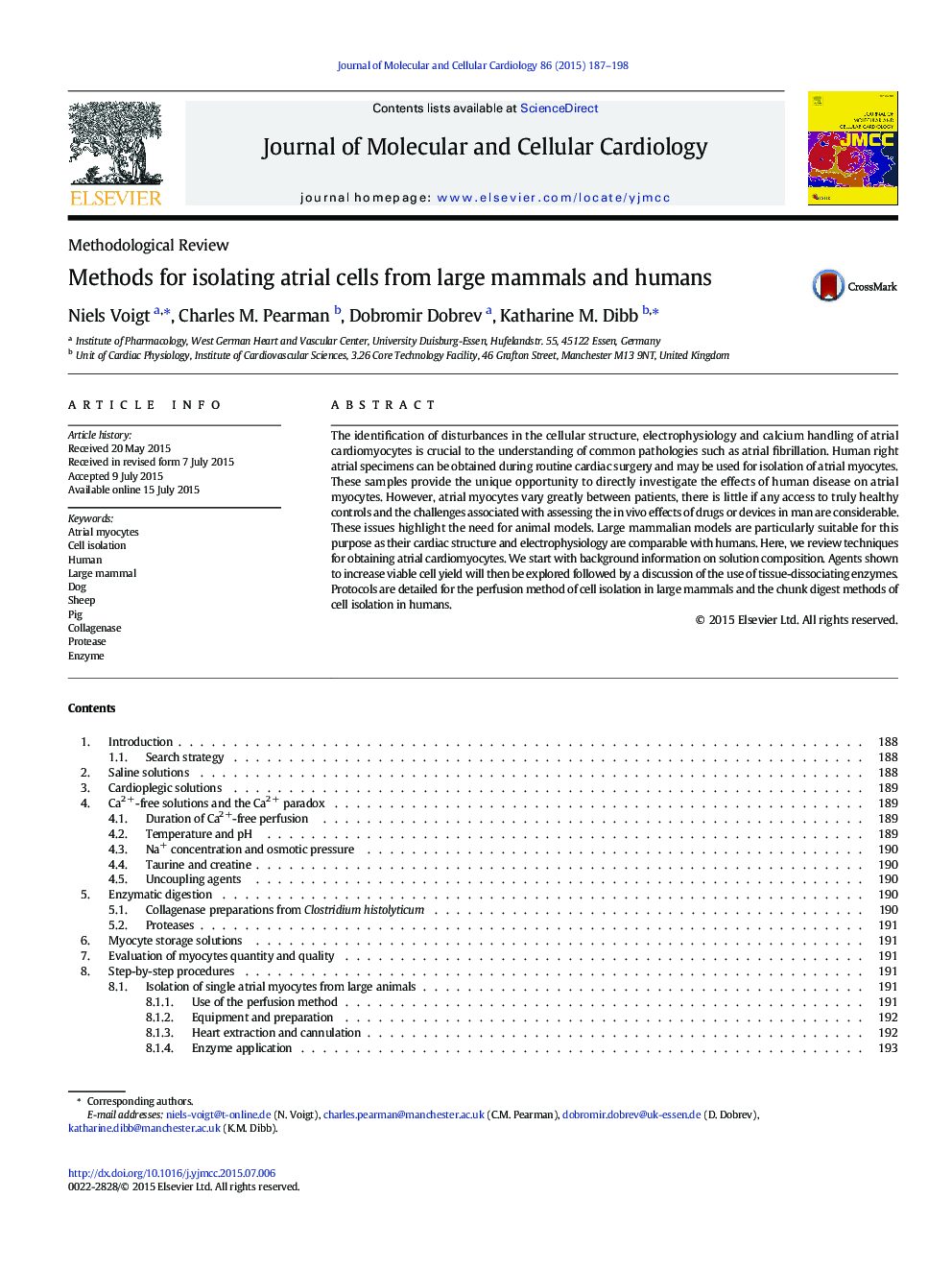| Article ID | Journal | Published Year | Pages | File Type |
|---|---|---|---|---|
| 8474115 | Journal of Molecular and Cellular Cardiology | 2015 | 12 Pages |
Abstract
The identification of disturbances in the cellular structure, electrophysiology and calcium handling of atrial cardiomyocytes is crucial to the understanding of common pathologies such as atrial fibrillation. Human right atrial specimens can be obtained during routine cardiac surgery and may be used for isolation of atrial myocytes. These samples provide the unique opportunity to directly investigate the effects of human disease on atrial myocytes. However, atrial myocytes vary greatly between patients, there is little if any access to truly healthy controls and the challenges associated with assessing the in vivo effects of drugs or devices in man are considerable. These issues highlight the need for animal models. Large mammalian models are particularly suitable for this purpose as their cardiac structure and electrophysiology are comparable with humans. Here, we review techniques for obtaining atrial cardiomyocytes. We start with background information on solution composition. Agents shown to increase viable cell yield will then be explored followed by a discussion of the use of tissue-dissociating enzymes. Protocols are detailed for the perfusion method of cell isolation in large mammals and the chunk digest methods of cell isolation in humans.
Related Topics
Life Sciences
Biochemistry, Genetics and Molecular Biology
Cell Biology
Authors
Niels Voigt, Charles M. Pearman, Dobromir Dobrev, Katharine M. Dibb,
